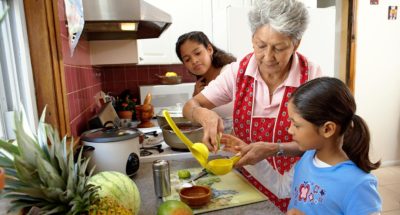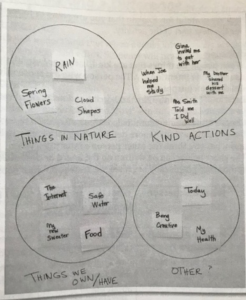
What is Gratitude?
Students define gratitude and the many forms it takes, and identify the intentions of someone who has acted in a caring way towards them, and how they benefit.

Students define gratitude and the many forms it takes, and identify the intentions of someone who has acted in a caring way towards them, and how they benefit.
Students will:
Take a moment to reflect on a time when someone did something kind for you. How did this make you feel? What was the intention behind the person’s kindness?
This activity has two parts, which may be done on two different days.



“Nurturing Gratitude From the Inside Out: 30 Activities for Grades K–8” was originally developed by The Inner Resilience Program, in partnership with the Greater Good Science Center and the John Templeton Foundation.
For the entire curriculum, click here.
One study found that affluent white students who were taught to think gratefully by considering the costs, benefits, and intentions behind a kind act were found, in comparison to a control group, to be happier and more grateful, and to show more grateful thinking. They also were more likely to write gratitude letters to PTA members.
In addition, research suggests that gratitude is also good for youth, going hand in hand with greater hope and optimism, higher satisfaction with life, and fewer health complaints.
Students who experience greater positive emotions tend to put in more effort to overcome obstacles, engage in classroom activities more, and be less stressed at school. In addition, positive mental health in childhood is linked to educational achievement and professional success later in life.

Do you want to dive deeper into the science behind our GGIE practices? Enroll in one of our online courses for educators!
Comments